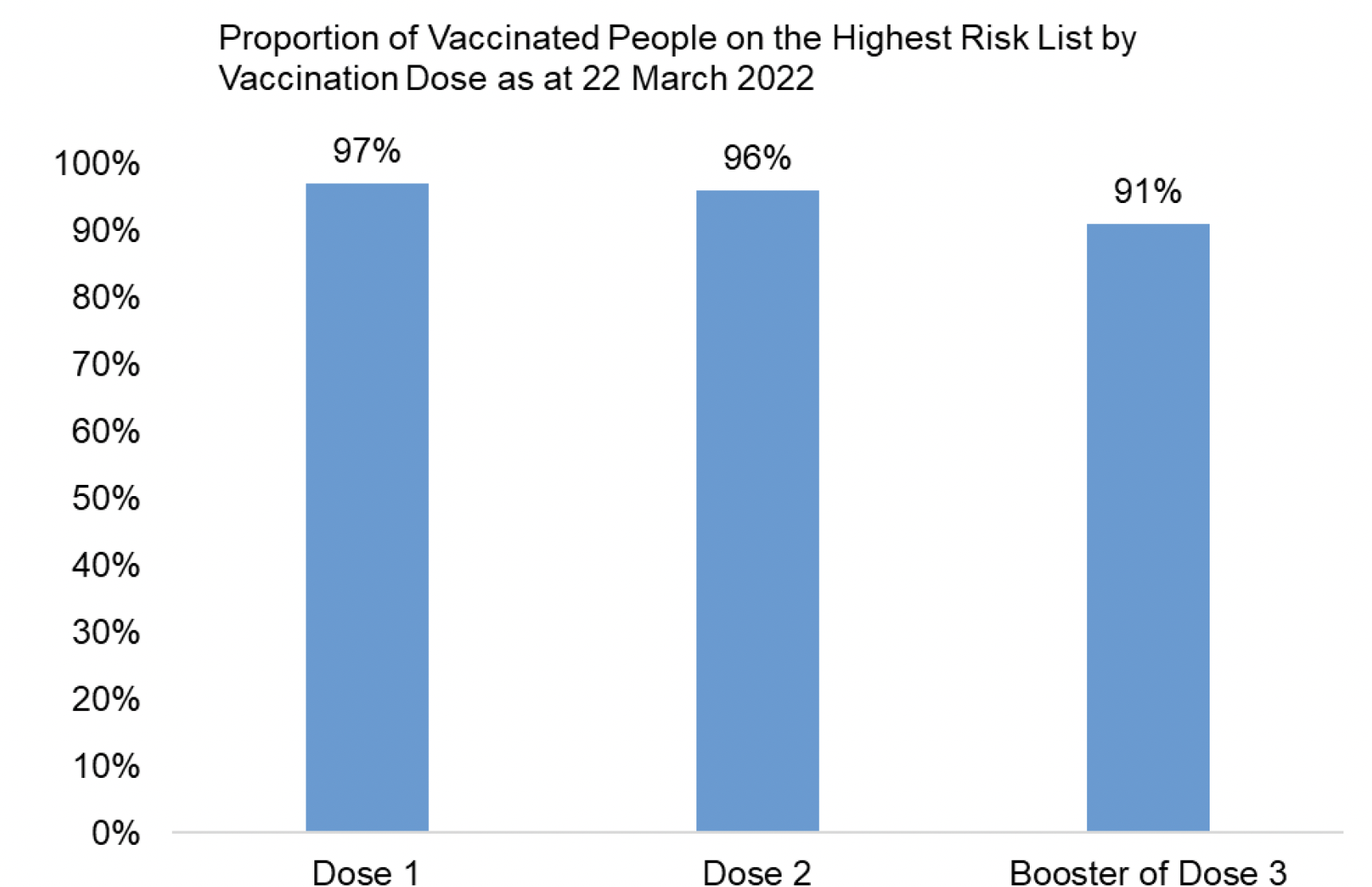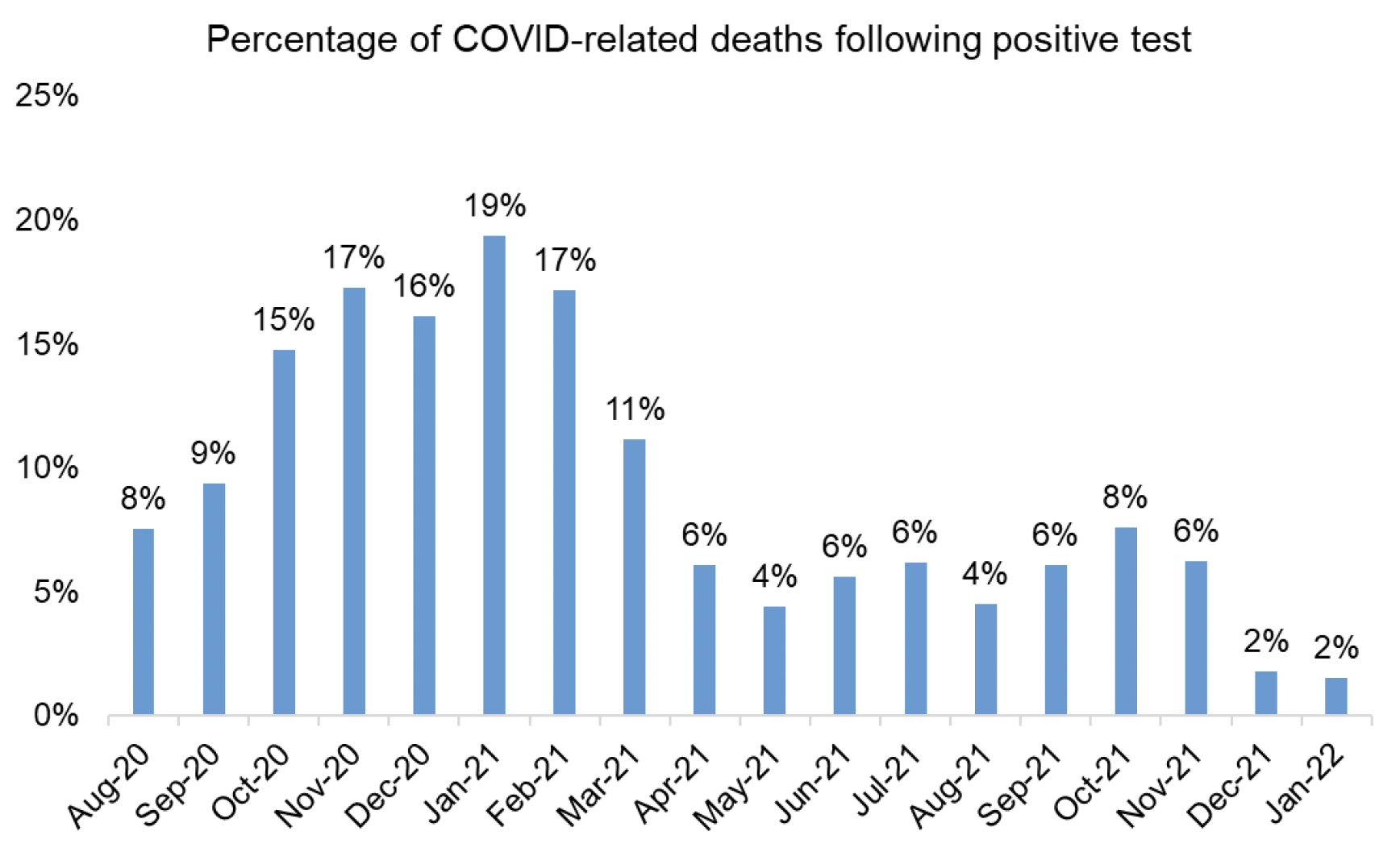Coronavirus (COVID-19) advice for people on the Highest Risk List: evidence review
This report presents key evidence underpinning our advice to people on Scotland's highest risk (formerly shielding) list.
Vaccine efficacy and effectiveness for people on the Highest Risk List
4. Vaccination rates[7]
4.1 Vaccination has progressed extremely well for the Highest Risk List population with approximately 96% of highest risk individuals now having received two doses, and around 91% having received a third dose or booster, as shown in figure 3 below.

4.2 In addition, 89% of everyone over 18 years of age in Scotland have now received their second dose, and over 77% have received a third dose or booster.
4.3 We know that vaccinated individuals can still transmit the virus but we also know that vaccinated individuals are less likely to become infected or to become seriously ill and require hospitalisation.
4.4 People who are aged 12 and over with a weakened immune system, people aged over 75 and people in care homes are being offered a second booster dose in Spring 2022[8].
5. Vaccine efficacy and effectiveness studies
5.1 Annex A details a review of relevant studies on vaccine efficacy and effectiveness that have informed Scottish Government COVID-19 Highest Risk policy. It includes summaries of the main findings and their key limitations.
5.2 This is not a complete list of studies on vaccine efficacy for the Highest Risk List. Readers should note that studies included in this list measure different things and this should be kept in mind when comparing findings between articles. For example, some studies have looked at vaccine efficacy after one dose only whereas others have looked at vaccine efficacy after two or three doses. The studies also use different methodologies and sampling approaches and this will also influence the findings. Please also note some of the studies referenced are pre-prints. This means they have not yet been peer-reviewed (evaluated for robustness by other academics in the same field) or published, and any findings should be considered more cautiously. Pre-prints have been highlighted where relevant. The full version of the bibliography can be found in Annex A.
6. Overview of Vaccine Efficacy findings
6.1 Overall, the findings of the studies included in Annex A suggest that vaccine efficacy for the Highest Risk List is not as high after the initial two doses as for the general population, with a number of articles recommending booster and/or third doses as well as continued non-clinical safety measures (e.g. face masks and social distancing) to protect the health and wellbeing of immunocompromised people. Some studies have also looked at what characteristics are associated with increased risk for adverse COVID-19 outcomes, with several Highest Risk List subgroups highlighted as well as characteristics such as being older, male, or living in a care home.
6.2 A number of studies included here have also looked at differences between vaccine types (mainly AstraZeneca, Pfizer, and Moderna) but statistical significance testing has not been carried out in all studies which means any differences are at this stage only observed and it is not clear whether the differences are coincidental or not.
6.3 A recent study[9] estimated that the Omicron variant was substantially less likely to result in COVID-19 hospitalisation than Delta. It also found that a third/booster dose of a COVID-19 vaccine offered substantial additional protection against symptomatic disease within two weeks of this additional dose, compared to two doses of vaccine received 25 or more weeks ago. This protection was greatest for Delta, but still substantial for Omicron.
7. Percentage of COVID-19 deaths in the Highest Risk List
7.1 We have seen a decrease in the total percentage of Highest Risk List COVID-related deaths following a positive test since the roll-out of the vaccination programme in December 2020. Nineteen per cent of people on the Highest Risk List with a positive COVID test sadly died from COVID-related causes in January 2021, however that percentage has continued to decrease and as of January 2022 was at 2%, as shown in figure 4 below.

7.2 We know there has been a significant reduction in the number of COVID-related deaths across all groups within the Highest Risk List since the roll-out of Scotland's vaccination programme, as highlighted in Figure 7.
7.3 We do not know if those dying of COVID-related causes were vaccinated but, as of 31 January 2022, 97% of the Highest Risk List had received at least one vaccine dose, 96% had received two doses and 90% had received a booster or a third dose.
7.4 Further evidence on COVID-related deaths is available in Annex B.
Contact
Email: Shielding@gov.scot
There is a problem
Thanks for your feedback